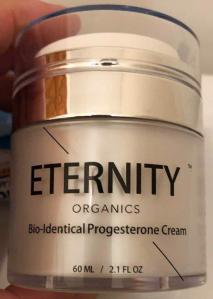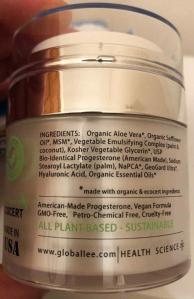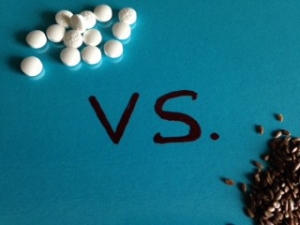
Should we or should we not take estrogen blockers if we have or have had breast cancer? Well, the answer is yes and no and perhaps maybe. Whether or not to take hormone blockers such as aromatase inhibitors is a huge decision many women diagnosed with breast cancer face. Lilly and I discussed this on her show, the Lillian McDermott Classroom. If you missed this conversation, you can replay it here: Is Blocking Estrogen After Cancer Good? Below is some additional information on the subject.
Is Estrogen Guilty?
Let’s talk about estrogen and reality. If estrogen really caused breast cancer, we would see far more breast cancer in young premenopausal women than postmenopausal, right?
While many doctors stress to their patients with hormone positive breast cancers that estrogen is fueling their cancer, let’s look at this logically. If our own estrogen was the real or only culprit, why is breast cancer more prevalent in postmenopausal women who certainly have lower estrogen levels then younger premenopausal women? And we would certainly see more breast cancer in pregnant women or those with young children, right? While those rates are rising, it is most likely due to chemical estrogens, not our own, as well as genetic mutations and other powerful drivers such as emotional traumas—but I’ll step away from that topic for now.
Estrogen receptors are on all breast cells, and are stimulated by estrogen, particularly in the absence of progesterone. It is true that when there is breast cancer there’ll be more estrogen receptors. But and this is a big but.
Typically, it is not so much our own estrogen that is sitting on these receptors, but rather the xenoestrogens that are doing the nasty deed. These include chemical estrogens found in self-care, beauty, plastics, paper products, cash register receipts, cleaning products, and the like. If we can eliminate those as best as we can, we severely reduce the toxic load of chemical estrogens that can accelerate cell proliferation. And since we might not be able to avoid everything, it might be helpful to block the receptors (but that doesn’t have to mean tamoxifen, which is considered to be carcinogenic and a form of chemo). Consuming phytoestrogens such as flaxseed, tahini (sesame seeds), and non GMO, organic whole-food soy can help block receptors.
Weight Matters
Postmenopausal women who are overweight, particularly in the belly area, often have increased levels of circulating estrogen. This is because when you are premenopausal most of your estrogen is made by the ovaries, but when you are postmenopausal, a little bit is made by the adrenals and then it is also made in fat cells, including those in the belly and breast. What this means is that a postmenopausal woman who is overweight will have a higher risk of breast cancer than a normal weight postmenopausal woman or premenopausal woman.
To be clear, just because there’s more estrogen doesn’t mean that is the reason we find more cancer in postmenopausal. It may have more to do with the visceral fat that surrounds the abdominal organs which secretes pro-inflammatory chemicals that can spike breast cancer. Cancer loves belly fat.
Should You Take an Aromatase Inhibitor?
When confronted with the decision to take an aromatase inhibitor (AI), one must ask the question does this make sense? We are all told that AIs will extend life, but do they really? Als can damage the heart, brain, bones, eyes — so many things essential to quantity and quality of life. Given that the number one cause of death in women is heart disease, not cancer, it is wise to do one’s research before committing to these drugs.
So, what can we do? lose weight, eat healthy, reduce or eliminate grains if you need to. Eliminate gluten. Eliminate processed foods. Exercise and move your body throughout the day. Take the stairs, park far from your destination. Make many trips up and down your stairs. Garden, walk the dog. If you struggle with your weight then an AI might be right for you, even if it is only for a short time while you make some lifestyle changes. However, there are many natural substances that help both with weight management as well as inhibiting aromatase (see below).
Meanwhile, metabolising estrogen is super important (taking advantage of the benefits and excreting any excess). Raising progesterone appropriately to offset estrogen can also be helpful. And super important is resolving past and present emotional traumas. Suppressed traumas are, in my humble opinion, one of the biggest drivers of cancer, and no estrogen-reducing drug can fix this. Topics for another day.
To read about the potential harms of aromatase inhibitors and what other options you might have, please read Natural Alternatives to Aromatase Inhibitors. There are many alternatives to these toxic drugs.
Just a few cool facts:
- Button mushrooms are natural aromatase inhibitors.
- Many supplements are either natural AIs or help to metabolize and detoxify estrogen.
- High blood levels of vitamin D are linked to reduced estrogen. D also reduces the number of estrogen receptors on breast cancer cells, making the cells less responsive to estrogens’ cancer-promoting signals.
- Apigenin – found in parsley, celery, and chamomile—is an aromatase inhibitor and is a potent estrogen metabolizing compound. It also inhibits cancer growth and progression.
- Vitex Fruit (Chaste Tree) may also be helpful to raise progesterone so that it can offset estrogen, particularly in premeno.
- Leafy greens such as arugula have both anti-cancer and estrogen-blocking properties.
- Apples contain insoluble fiber that binds to estrogen, preventing it from being absorbed in the body.
- Coconut protects the liver from excess estrogen and other toxins.
- Avocados help reduce the absorption of estrogen.
- Grapes and red wine contain resveratrol and other polyphenols that are known to lower estrogen levels. The quercetin they contain also inhibits cancer growth.
- Eggs help boost detox pathways and aid in the removal of excess estrogen.
- Citrus fruits contain phytochemicals that act as antiestrogens and target estrogen receptors, helping to prevent the growth of cancer cells. The d-limonene in them (especially the peels) aids in detoxifying estrogen.
- Olive oil is high in lutropin, a natural aromatase inhibitor.
Read also: Natural Alternatives to Anti-hormone Therapies for Breast cancer
REPLAY: Is Blocking Estrogen After Cancer Good?
Always remember that you and only you can determine the best treatment for your cancer. Your cancer, your body, your choice of treatment.
In your everlasting good health,
Elyn
~~If you don’t know your options, you don’t have any~~

Elyn Jacobs is a breast cancer survivor and holistic cancer strategist who helps people make healthier, less-toxic choices for their healing. She emphasizes the importance of not just surviving cancer but surviving well and reducing the risk of recurrence. She is a Contributing Editor for The Truth About Cancer and is on the Medical Advisory Board for BeatCancer.Org and the Advisory Board to the Radical Remission Project. Elyn has written for numerous journals and publications. She was the former Executive Director of the Emerald Heart Cancer Foundation and the creator and host of the Survive and Live Well Radio Show. To contact Elyn, visit www.elynjacobs.com. Elyn offers consults via Skype, phone, or in-person. Elyn does not provide online advice.
DISCLAIMER:
Elyn Jacobs does not provide medical advice. The information provided is for general information only. No online site should be used as a substitute for personal medical attention.
This information is for educational purposes only and is not a recommendation to forgo medical advice and treatment. This post is not intended to treat, cure, prevent, or diagnose any disease or condition. This post does not represent medical advice, nor should it be considered to be medical advice or a replacement for medical advice. I encourage you to discuss this information with your integrative oncologist, naturopathic doctor, or conventional oncologist. The information provided is from my research and not to be taken as scientific evidence. Elyn Jacobs Consulting, Inc. does not provide endorsement for the content, claims, or products discussed in this article.
Affiliate Links Disclosure:
Some product links on some posts are affiliate links. This website is monetized in part using affiliate links. This means that if you were to click on a link that is an affiliate link and purchase an item after clicking on that link, I may receive a small percentage of the sales price. I only recommend products that I love and use often. Thank you for your support!
Follow Elyn on Facebook
Follow Elyn on LinkedIn

 Elyn Jacobs is a breast cancer survivor and holistic cancer strategist who helps people make healthier, less-toxic choices for their healing. She emphasizes the importance of not just surviving cancer, but surviving well and reducing the risk of recurrence. Elyn specializes in understanding the role of estrogen in breast cancer and debunks the myths associated. She is a Contributing Editor for The Truth About Cancer and is on the Medical Advisory Board for BeatCancer.Org and the Advisory Board to the Radical Remission Project. Elyn has written for numerous journals and publications. She was the former Executive Director of the Emerald Heart Cancer Foundation and the creator and host of the Survive and Live Well Radio Show. To contact Elyn, visit
Elyn Jacobs is a breast cancer survivor and holistic cancer strategist who helps people make healthier, less-toxic choices for their healing. She emphasizes the importance of not just surviving cancer, but surviving well and reducing the risk of recurrence. Elyn specializes in understanding the role of estrogen in breast cancer and debunks the myths associated. She is a Contributing Editor for The Truth About Cancer and is on the Medical Advisory Board for BeatCancer.Org and the Advisory Board to the Radical Remission Project. Elyn has written for numerous journals and publications. She was the former Executive Director of the Emerald Heart Cancer Foundation and the creator and host of the Survive and Live Well Radio Show. To contact Elyn, visit  Elyn Jacobs is a breast cancer survivor and holistic cancer strategist who helps people make healthier, less-toxic choices for their healing. She emphasizes the importance of not just surviving cancer, but surviving well and reducing the risk of recurrence. She is a Contributing Editor for The Truth About Cancer and is on the Medical Advisory Board for BeatCancer.Org and the Advisory Board to the Radical Remission Project. Elyn has written for numerous journals and publications. She was the former Executive Director of the Emerald Heart Cancer Foundation and the creator and host of the Survive and Live Well Radio Show. To contact Elyn, visit
Elyn Jacobs is a breast cancer survivor and holistic cancer strategist who helps people make healthier, less-toxic choices for their healing. She emphasizes the importance of not just surviving cancer, but surviving well and reducing the risk of recurrence. She is a Contributing Editor for The Truth About Cancer and is on the Medical Advisory Board for BeatCancer.Org and the Advisory Board to the Radical Remission Project. Elyn has written for numerous journals and publications. She was the former Executive Director of the Emerald Heart Cancer Foundation and the creator and host of the Survive and Live Well Radio Show. To contact Elyn, visit 

 Elyn Jacobs is a breast cancer survivor and holistic cancer strategist who helps people make healthier, less-toxic choices for their healing. She emphasizes the importance of not just surviving cancer, but surviving well and reducing the risk of recurrence. She is a Contributing Editor for The Truth About Cancer and is on the Medical Advisory Board for BeatCancer.Org and the Advisory Board to the Radical Remission Project. Elyn has written for numerous journals and publications. She was the former Executive Director of the Emerald Heart Cancer Foundation and the creator and host of the Survive and Live Well Radio Show. To contact Elyn, visit
Elyn Jacobs is a breast cancer survivor and holistic cancer strategist who helps people make healthier, less-toxic choices for their healing. She emphasizes the importance of not just surviving cancer, but surviving well and reducing the risk of recurrence. She is a Contributing Editor for The Truth About Cancer and is on the Medical Advisory Board for BeatCancer.Org and the Advisory Board to the Radical Remission Project. Elyn has written for numerous journals and publications. She was the former Executive Director of the Emerald Heart Cancer Foundation and the creator and host of the Survive and Live Well Radio Show. To contact Elyn, visit  Marnie Clark is a breast cancer coach, and also a 15-year breast cancer survivor. Marnie has studied natural medicine for over 25 years and knew that in order for her own body to heal from breast cancer, it would require a blend of both conventional and natural medicine. She now teaches others going through breast cancer about the things in nature that help to make the body hostile terrain for cancer cells, as well as empowering clients with knowledge about the lifestyle alterations that are crucial to the healing process. Marnie draws from several decades of experience in the disciplines of massage therapy, natural healing and nutrition, aromatherapy and energy healing. Her website is
Marnie Clark is a breast cancer coach, and also a 15-year breast cancer survivor. Marnie has studied natural medicine for over 25 years and knew that in order for her own body to heal from breast cancer, it would require a blend of both conventional and natural medicine. She now teaches others going through breast cancer about the things in nature that help to make the body hostile terrain for cancer cells, as well as empowering clients with knowledge about the lifestyle alterations that are crucial to the healing process. Marnie draws from several decades of experience in the disciplines of massage therapy, natural healing and nutrition, aromatherapy and energy healing. Her website is 

 toxins. The fiber in raw carrots binds to excess estrogen, helping to safely remove it from the body.
toxins. The fiber in raw carrots binds to excess estrogen, helping to safely remove it from the body.